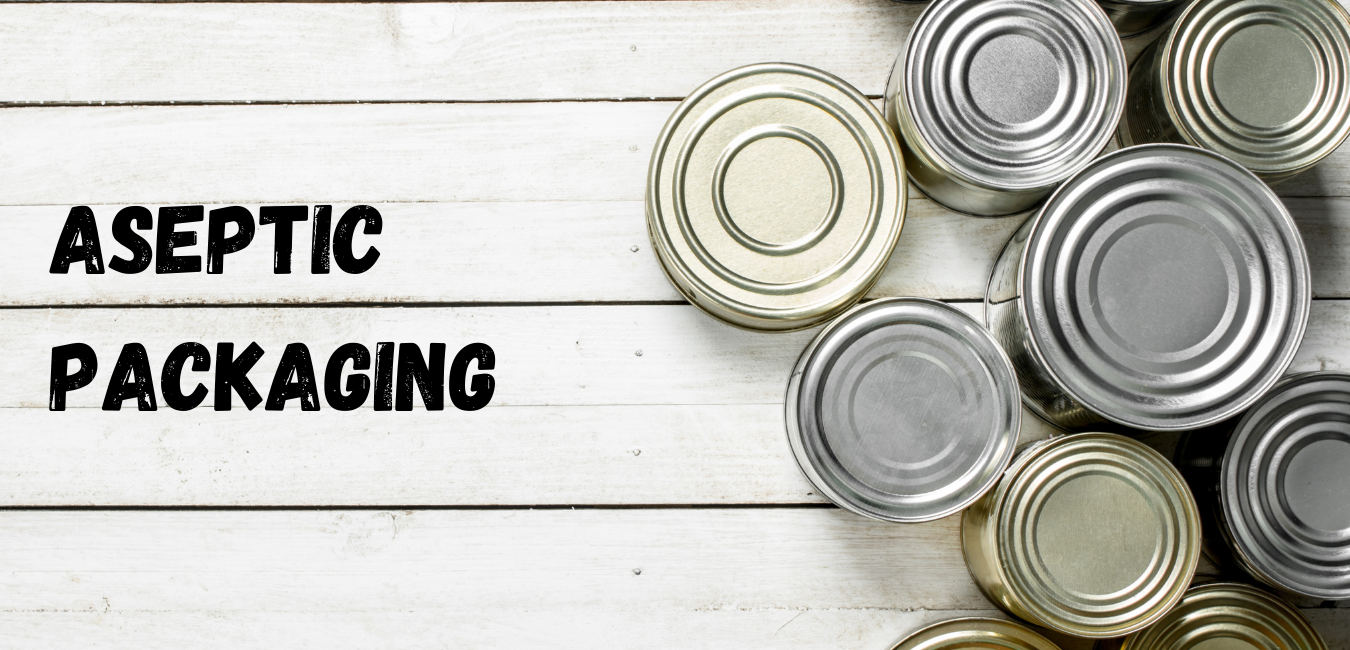Currently Empty: $0

Aseptic Packaging – An overview
Aseptic Packaging is the packaging process in which commercially aseptic product is filled into sterile containers under aseptic conditions and then sealed the containers so that reinfection is prevented.
The term aseptic is derived from the Greek word “septicos” which means the absence of infected microorganisms. The first aseptic packaging of food was carried out in Denmark by Nielsen prior to 1913. Generally, there are two specific fields for which aseptic packaging technology is used:• Packaging of pre-sterilized and sterile products. eg. Dairy products, juices, soup, sauces, etc. • Packaging of non-sterile products to keep away from microorganisms that cause contamination e.g. fermented dairy products.
Aseptic processing methodology is composed of the following steps:
- Sterilization of products prior to filling.
- Sterilization of packaging materials and closures before filling.
- Sterilization of aseptic installations before operation.
- Maintain total sterility during the entire operation.
- Production of hermetic packages.
Product sterilization:
Pre-sterilization of product usually consists of heating the product to the desired (UHT) ultrahigh temperature for a given period in order to achieve the desired degree of sterility, with subsequent cooling. Heating and cooling should be performed as rapidly as possible to achieve the best quality product.Sterilization of Aseptic Packaging materials and equipment –
Heat, Chemicals, and radiation have been used, alone or in combination, for sterilization of aseptic equipment and packaging materials.- Heat: Product supply lines and filling equipment are commonly sterilized by moist heat and dry heat systems, in which moist heat is frequently sterilized at a temperature of 121-129 °C while 176- 232 °C is used for dry heat.
- Chemicals: Hydrogen peroxide is used as a chemical sterilant. It is not an effective sporicidal at room temperature. However, the sporicidal activity increases with increasing temperature.
- Radiation: Gamma radiations are used for the decontamination of equipment. Different doses are required for different types of foods like a dose of 1.5 megaradian is commonly used for decontamination of acidified food containers.
- Filling: The sterilized product is gathered in a barren tank prior to packaging. The valve system that connects the cooling section of the tank and the packaging system, permits the processor to carries out these functions more or less independently.
- Sealing: Aseptic systems have the ability for closing or sealing the package hermetically so that it reduces the chance of contamination during handling or distribution.
Major categories of aseptic packaging systems include;
- Carton system: includes form-fill-seal cartons and prefabricated cartons.
- Bottle system: include glass containers and plastic bottles.
- Sachet and pouch systems include form-fill-seal systems and lay flat tubing.
- Cup system: includes pre-formed plastic cup, form-fill, and seal cups.
- Bulk packaging system: classified into the metal drum and bag-in-box packaging lines.
Integrity check for aseptic packaging material includes:
- Teardown test for checking of sealing strength.
- Electrolytic test for pinhole testing.
- Dye test, checking pinholes in laminated cartons.
- Sterility test checks for the presence of microbial contamination.
The main limitation of Aseptic Packaging is that it is highly expensive because sterilization of the packaging materials requires different machinery.
In India currently, these forms of the package are available:- TBA: tetra brix aseptic
- TFA: tetra fino aseptic
- TCA: tetra classic aseptic.
- TWA: tetra wedge aseptic.

 0
0
